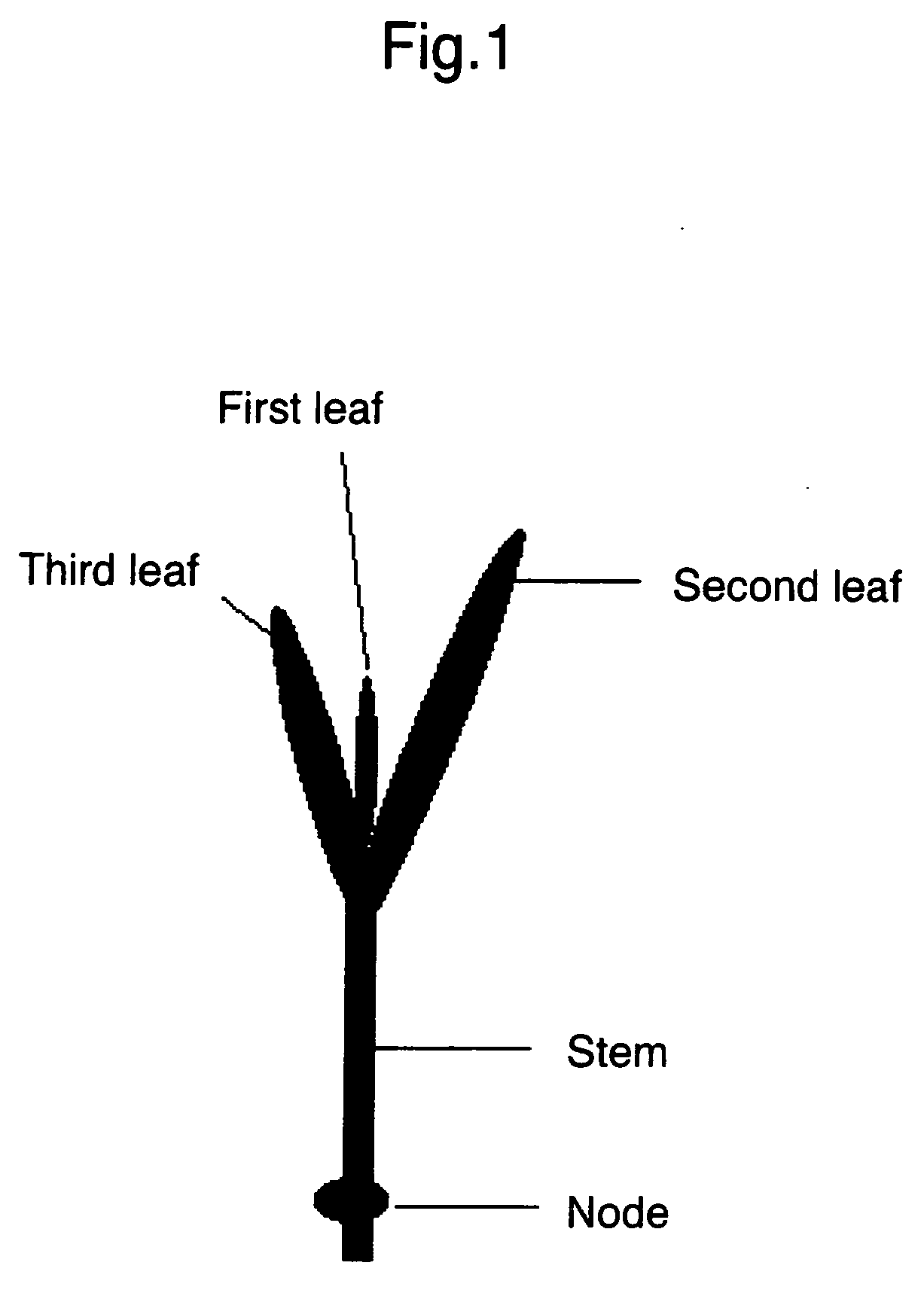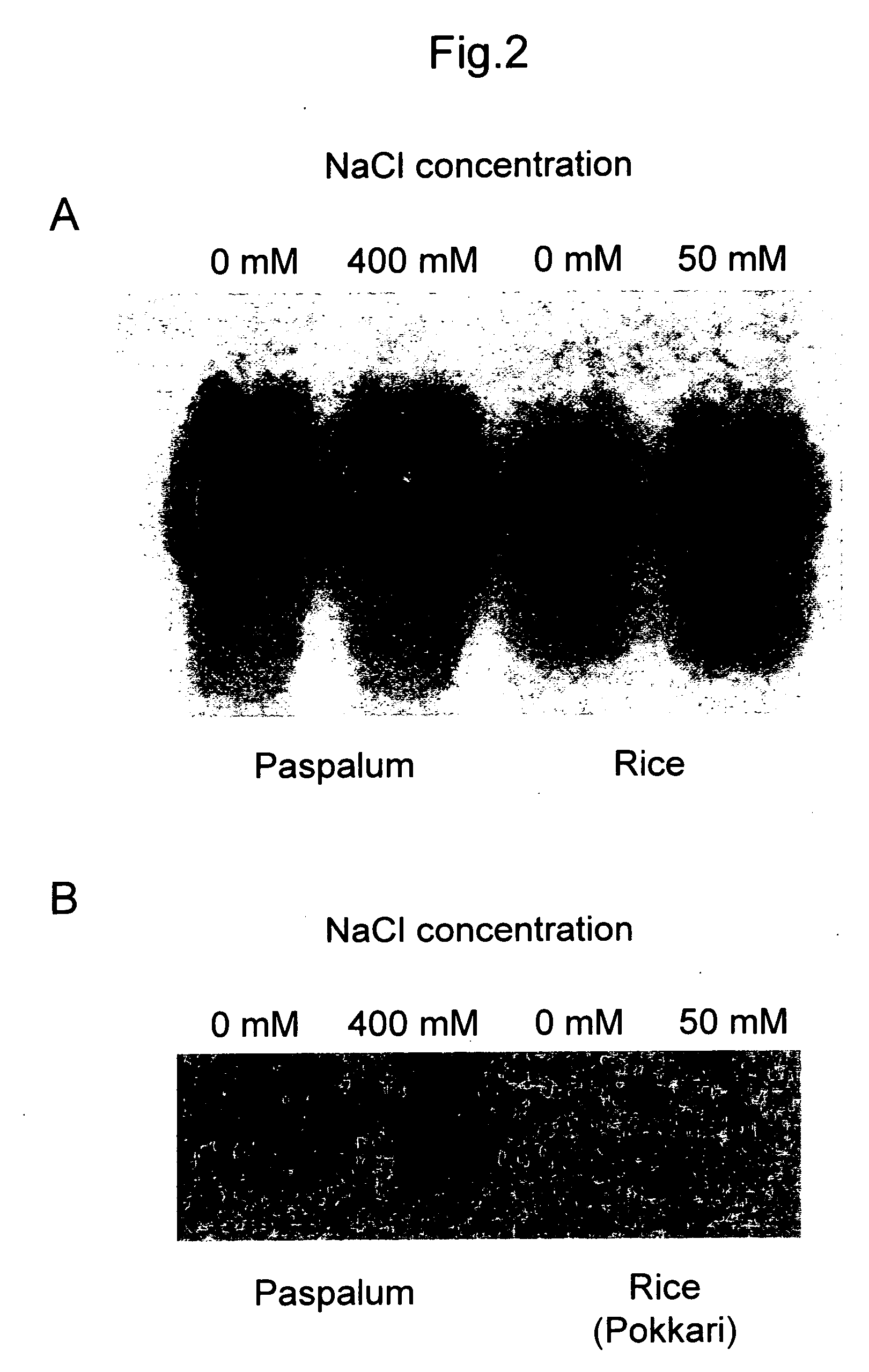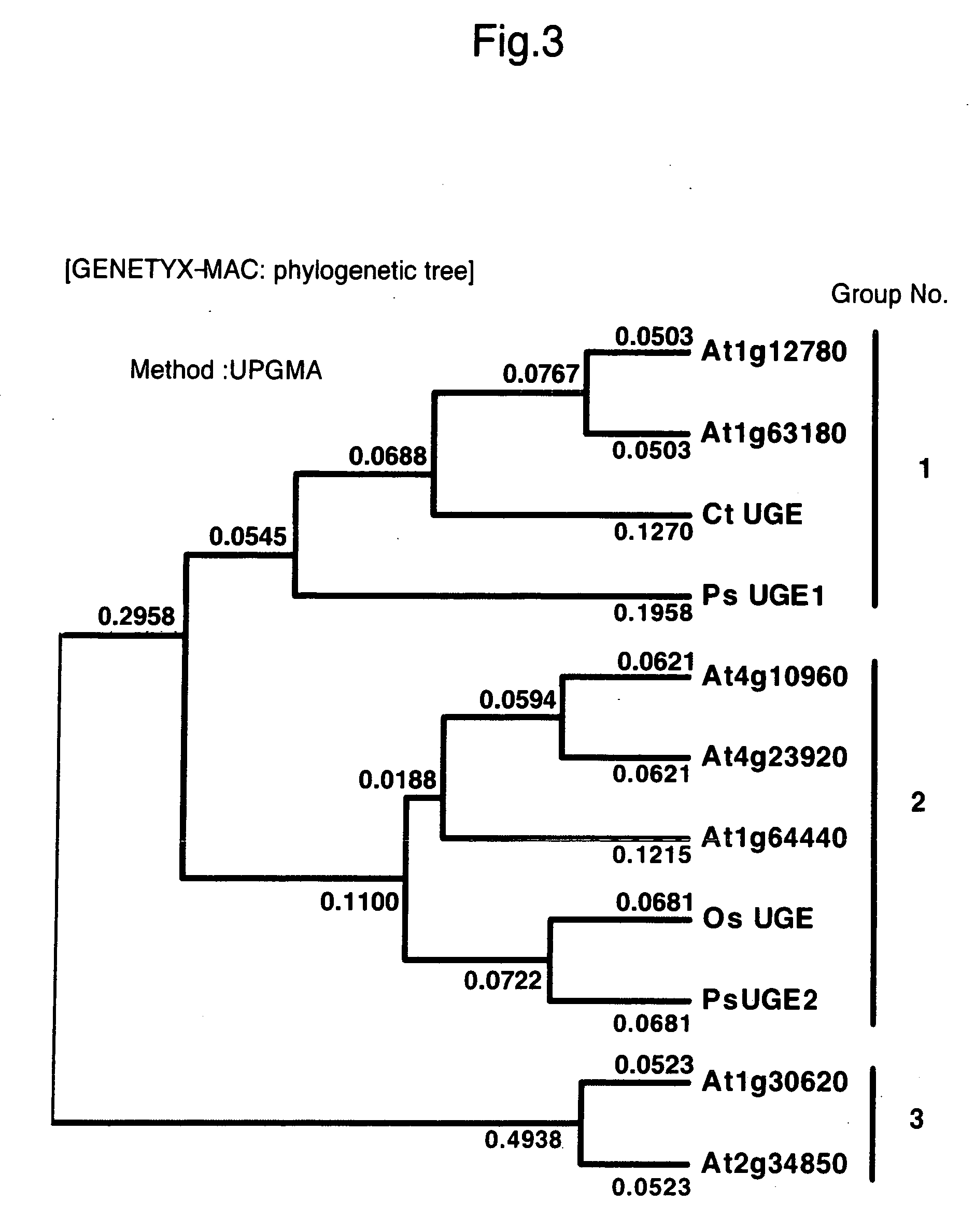Gene capable of imparting salt stress resistance
a technology of salt stress resistance and gene, applied in the field of gene capable of imparting salt stress resistance, can solve the problems of no gene that imparted salt stress for a long time, not only in the affected area, and actually remain unused
- Summary
- Abstract
- Description
- Claims
- Application Information
AI Technical Summary
Problems solved by technology
Method used
Image
Examples
example 1
Cloning of Paspalum Genes, the Expression of which is Induced by Salt Stress
[0112] General RNA and DNA experiments were carried out in accordance with Molecular Cloning: A laboratory manual, second edition, Cold Spring Harbor Laboratory Press, New York, 1989. These procedures were employed as routine procedures. The method for using the kit for experiment was in accordance with the protocol issued by the manufacturer.
(1) Preparation of Plant Material
[0113] Seashore Papalum (Duedck A. E. and Peacock C. H., Agronomy Journal, vol. 77, 47-50 (1985)) was planted in a 1 / 5000 a Wagner pot containing sand. Seawater with a salt concentration of 2.3% to 2.7% obtained from the Tokyo Bay was poured into the pot, and culturing was carried out in a greenhouse for 3 to 6 months. Seawater was poured onto the pot once a day until it came out of the drainage hole of the Wagner pot. Through such seawater pouring, the seashore papalum kept growing for at least 5 years and exhibited tolerance to sea...
example 2
Preparation of Vector for Plant Expression
[0132] The full-length cDNA of Ps UGE obtained in Example 1 was introduced into an expression vector for introducing plant genes in the following manner. In order to remove the 3′-poly(A), PCR was carried out using the aforementioned clone PS UGE1 as a template, the sequence consisting of a 45-bp to 64-bp region upstream of the insert 5′-ACAGAGCCGCAAAACCACAC-3′ (SEQ ID NO: 10), as the sense primer, the sequence consisting of a 1314-bp to 1340-bp region downstream thereof 5′-TTCGTAGCTAGGCACATTCGAGCGGTC-3′ (SEQ ID NO: 11), as the antisense primer, and the Pyrobest enzyme (Takara Bio Inc.) under conditions of 98° C. for 2 minutes, 30 cycles of 96° C. for 30 seconds, 62° C. for 30 seconds, and 72° C. for 2 minutes, followed by 72° C. for 3 minutes. The amplified DNA fragment (about 1.3 kb) was separated via agarose gel electrophoresis, cleaved out, and then purified using a Gel Extraction Kit (Qiagen). This fragment was cloned into pCR-Script A...
example 3
Preparation of Transgenic Plant (Rice) and Confirmation of Introduced Gene
(1) Preparation of Ps UGE Transgenic Rice
[0138] Protoplast was isolated from a liquid culture system capable of redifferentiation derived from ripe rice seeds (variety: Nipponbare; seed paddies available from the Agricultural Cooperatives in Shiga) and designated as a test material. Protoplast preparation and electroporation were carried out in accordance with, for example, the method of Kyozuka et al. (Mol. Gen. Gnet., 206, pp. 408-413, 1987), the method of Toriyama et al. (Bio / Technology 6, pp. 1072-1074), or the method of Akagi et al. (Mol. Gen. Gnet., 215, pp. 501-506, 1989).
[0139] The protoplast (2×106 / ml) and plasmid DNA (cotransformation of Ps UGE1a / pBI121Hm, Ps UGE1a / pBI221Hm, or Ps UGE1a / pBI221 with HPT / pBI221) were suspended in an introduction buffer to a concentration of 50 μg / ml comprising 0.4 M mannitol, 70 mM potassium aspartate, 5 mM calcium gluconate, and 5 mM MES and then subjected to elec...
PUM
| Property | Measurement | Unit |
|---|---|---|
| Electrical resistance | aaaaa | aaaaa |
| Stress optical coefficient | aaaaa | aaaaa |
Abstract
Description
Claims
Application Information
 Login to View More
Login to View More - R&D
- Intellectual Property
- Life Sciences
- Materials
- Tech Scout
- Unparalleled Data Quality
- Higher Quality Content
- 60% Fewer Hallucinations
Browse by: Latest US Patents, China's latest patents, Technical Efficacy Thesaurus, Application Domain, Technology Topic, Popular Technical Reports.
© 2025 PatSnap. All rights reserved.Legal|Privacy policy|Modern Slavery Act Transparency Statement|Sitemap|About US| Contact US: help@patsnap.com



